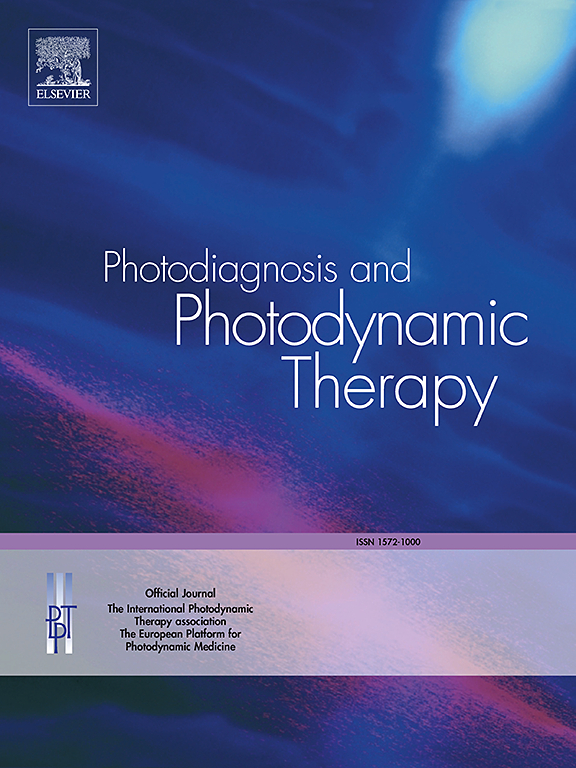Exploration of choroidal vascular changes in juveniles with different degrees of myopia: The application of swept-source optical coherence tomography angiography
IF 3.1
3区 医学
Q2 ONCOLOGY
引用次数: 0
Abstract
Objective
To investigate the vascular characteristic changes in the macular retina and choriocapillaris, as well as the choroidal vascularization of eyes with different degrees of myopia in juveniles using Swept-source Optical Coherence Tomography (SS-OCT), aiming to understand the pathophysiological characteristics of myopic eyes further.
Methods
We conducted a retrospective case-control study involving 103 patients (198 eyes) aged 6–17 years who had undergone SS-OCT examination. Based on equivalent spherical power, they were divided into four groups: emmetropia group, low myopia group, moderate myopia group, and high myopia group. The density of superficial capillary plexuses (SCP), choriocapillaris (CC), choroid vessel (CV)layers, and subfoveal choroidal thickness (SFCT) in the macular area were measured using SS-OCT. Multivariate regression analysis was employed to determine the ocular and demographic factors associated with retinal and choroidal blood flow indicators.
Results
In the temporal parafoveal area, the superficial capillary plexus (SCP) density was significantly lower in the moderate myopia group compared to the low myopia group (47.27 ± 2.21 vs. 48.51 ± 1.8, p = 0.002). Conversely, subfoveal choroidal vessel (CV) density was substantially higher in highly myopic eyes than in emmetropic eyes (56.98± 3.65 vs. 53.70 ± 4.31, p = 0.023). The multiple linear regression analysis showed that in the area under the fovea, thinner choroidal thickness is associated with higher choroidal vessel density. Specifically, as choroidal thickness decreases, the density of choroidal vessels increases (p = 0.024).
Conclusions
For juveniles, with the progression of myopia, the density of retinal superficial blood vessels and choroidal capillaries remains at a relatively stable level, while the choroidal vessel density under the fovea gradually increases. The main cause of changes in choroidal vessel density is the thickness of choroid under the fovea.
不同程度青少年近视脉络膜血管变化的探讨:扫描源光学相干断层血管造影的应用。
目的:利用扫描源光学相干断层扫描(SS-OCT)研究青少年不同程度近视眼黄斑视网膜和脉络膜毛细血管的血管特征变化及脉络膜血管化情况,进一步了解近视眼的病理生理特征。方法:我们进行了一项回顾性病例对照研究,涉及103例(198眼),年龄6-17岁,接受了SS-OCT检查。根据等效球面度数分为四组:远视组、低近视眼组、中度近视眼组和高度近视眼组。采用SS-OCT检测黄斑区浅表毛细血管丛(SCP)、绒毛膜毛细血管(CC)、脉络膜血管(CV)层密度及中央凹下脉络膜厚度(SFCT)。采用多元回归分析确定与视网膜和脉络膜血流指标相关的眼部和人口统计学因素。结果:在颞中央凹旁区,中度近视组浅毛细血管丛(SCP)密度显著低于低近视组(47.27±2.21∶48.51±1.8,p = 0.002)。相反,高度近视眼的中央凹下脉络膜血管(CV)密度明显高于远视眼(56.98±3.65 vs. 53.70±4.31,p = 0.023)。多元线性回归分析显示,在中央凹下区域,脉络膜厚度越薄,脉络膜血管密度越高。随着脉络膜厚度的减小,脉络膜血管密度增大(p = 0.024)。结论:对于青少年,随着近视的进展,视网膜浅层血管和脉络膜毛细血管密度保持在一个相对稳定的水平,而中央凹下脉络膜血管密度逐渐增加。脉络膜血管密度变化的主要原因是中央窝下脉络膜的厚度。
本文章由计算机程序翻译,如有差异,请以英文原文为准。
求助全文
约1分钟内获得全文
求助全文
来源期刊

Photodiagnosis and Photodynamic Therapy
ONCOLOGY-
CiteScore
5.80
自引率
24.20%
发文量
509
审稿时长
50 days
期刊介绍:
Photodiagnosis and Photodynamic Therapy is an international journal for the dissemination of scientific knowledge and clinical developments of Photodiagnosis and Photodynamic Therapy in all medical specialties. The journal publishes original articles, review articles, case presentations, "how-to-do-it" articles, Letters to the Editor, short communications and relevant images with short descriptions. All submitted material is subject to a strict peer-review process.
 求助内容:
求助内容: 应助结果提醒方式:
应助结果提醒方式:


